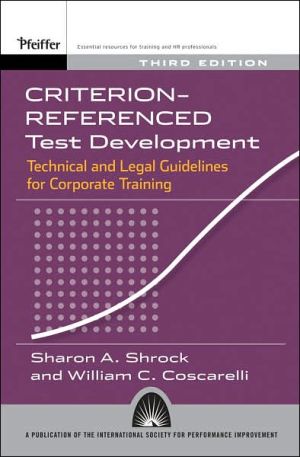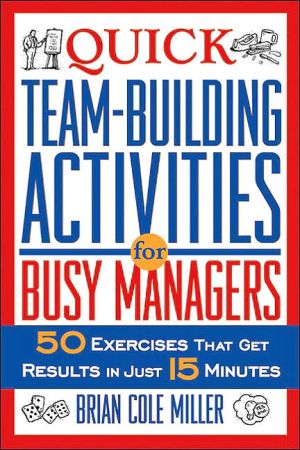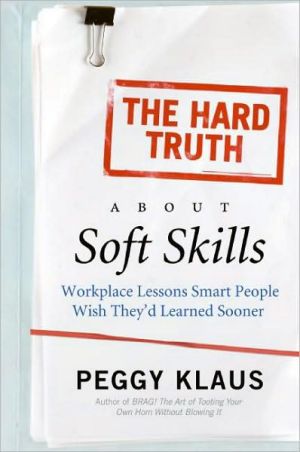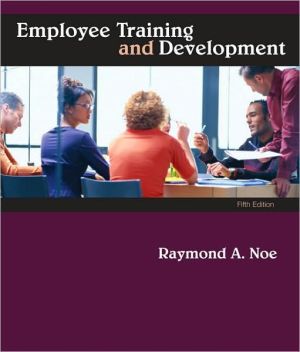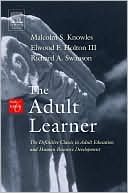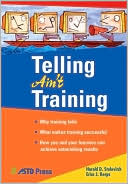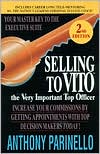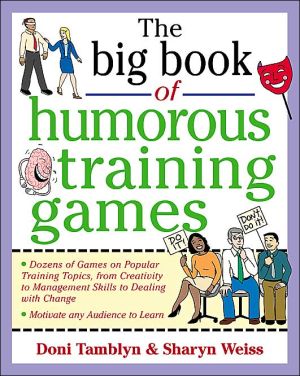Criterion-referenced Test Development: Technical and Legal Guidelines for Corporate Training
Criterion-Referenced Test Development is designed specifically for training professionals who need to better understand how to develop criterion-referenced tests (CRTs). This important resource offers step-by-step guidance for how to make and defend Level 2 testing decisions, how to write test questions and performance scales that match jobs, and how to show that those certified as -masters? are truly masters. A comprehensive guide to the development and use of CRTs, the book provides...
Search in google:
Criterion-Referenced Test Development THIRD EDITION This is the third edition of the classic and comprehensive reference guide to the theory and practice of competency testing in organizations and professions. Criterion-Referenced Test Development has been thoroughly revised and updated to address the most recent issues in certification and qualification testing. Criterion-Referenced Test Development is designed specifically for training professionals who need to better understand how to develop criterion-referenced tests (CRTs). This important resource offers step-by-step guidance for how to make and defend Level 2 testing decisions, how to write test questions and performance scales that match jobs, and how to show that those certified as "masters" are truly masters. A comprehensive guide to the development and use of CRTs, the book provides information about a variety of topics, including different methods of test interpretations, test construction, item formats, test scoring, reliability and validation methods, test administration, and score reporting, as well as the legal and liability issues surrounding testing. New revisions include: Illustrative real-world examples Issues of test security Advice on the use of test creation software Expanded sections on performance testing Single administration techniques for calculating reliability Updated legal and compliance guidelines The authors have created a very accessible guide with information that is easily grasped and implemented. In addition, the book is filled withrelevant exercises that require active responses and reinforce mastery of the principles and procedures.
List of Figures, Tables, and Sidebars. Introduction: A Little Knowledge Is Dangerous. Why Test? Why Read This Book? A Confusing State of Affairs. Misleading Familiarity. Inaccessible Technology. Procedural Confusion. Testing and Kirkpatrick’s Levels of Evaluation. Certifi cation in the Corporate World. Corporate Testing Enters the New Millennium. What Is to Come. . . PART I: BACKGROUND: THE FUNDAMENTALS. 1 Test Theory. 2 Types of Tests. PART II: OVERVIEW: THE CRTD MODEL AND PROCESS. 3 The CRTD Model and Process. PART III: THE CRTD PROCESS: PLANNING AND CREATING THE TEST. 4 Plan Documentation. 5 Analyze Job Content. 6 Content Validity of Objectives. 7 Create Cognitive Items. 8 Create Rating Instruments. 9 Establish Content Validity of Items and Instruments. 10 Initial Test Pilot. 11 Statistical Pilot. 12 Parallel Forms. 13 Cut-Off Scores. 14 Reliability of Cognitive Tests. 15 Reliability of Performance Tests. 16 Report Scores. PART IV: LEGAL ISSUES IN CRITERION-REFERENCED TESTING. 17 Criterion-Referenced Testing and Employment. Epilogue: CRTD as Organizational Transformation. References. Index. About the Authors.
